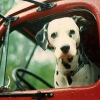-
Posts
9 -
Joined
-
Last visited
-
 I just read your June 12, 2016 post about the “Fluid Drive Coupling” on the prestomic transmission which is in my 1949 Chrysler Windsor. I have an issue and I think you might be able to help me. I drained the fluid drive transmission on my 1949 Chrysler Windsor and refilled. Right after, I realized I put in three quarts of 10W but was supposed to put in three pints. When I went to drain off the additional three pints, nothing came out the drain plug. After reading your post, I realize that I put the fluid in the fluid drive coupling unit. Can you give direction as to what I need to do to correct this. I feel like a fool! Any help would be appreciated.
I just read your June 12, 2016 post about the “Fluid Drive Coupling” on the prestomic transmission which is in my 1949 Chrysler Windsor. I have an issue and I think you might be able to help me. I drained the fluid drive transmission on my 1949 Chrysler Windsor and refilled. Right after, I realized I put in three quarts of 10W but was supposed to put in three pints. When I went to drain off the additional three pints, nothing came out the drain plug. After reading your post, I realize that I put the fluid in the fluid drive coupling unit. Can you give direction as to what I need to do to correct this. I feel like a fool! Any help would be appreciated.
- Show previous comments 2 more
-

 After more reading, this is what I understand. It was the transmission that I drained, and the transmission fill and drain is different than the fluid drive coupling fill. Now I see where I need to fill the transmission. Going back to my original issue, I poured 10 weight oil into the bell housing thinking I was putting it into the transmission. I never removed the nut that would allow me to see the fluid level in the fluid drive coupling. Here is my question, where did the oil go that I poured into the bell housing? Nothing came out onto the ground.
After more reading, this is what I understand. It was the transmission that I drained, and the transmission fill and drain is different than the fluid drive coupling fill. Now I see where I need to fill the transmission. Going back to my original issue, I poured 10 weight oil into the bell housing thinking I was putting it into the transmission. I never removed the nut that would allow me to see the fluid level in the fluid drive coupling. Here is my question, where did the oil go that I poured into the bell housing? Nothing came out onto the ground.
-

The fluid should have drained right out of the bell housing for sure!
It's just an open cavity enclosing the fluid drive coupling and at the bottom of it there is a 4" square screen and or a 1/4" hole at the bottom of the bell housing. The above drawing shows that lower screen that oil would pour out of. It is not sealed in any way. The oil you poured into the bell housing had to come out. I just don't see haow the 3 quarts of oil would not run out of the housing.
I've had so many of those housings apart over the years.
Did you have your drain pan under it? Was the car parked over dirt or concrete when you did this work?
-

Ya, know. I had a square basin of gas underneath the car during that time. Off and on for a week, I used it to loosen up the old grease and grime that had built up around the grease fittings and under the car. It must have gone into the basin. That is the only thing I can think. The car is on concrete. If it had gone anywhere else, I would have seen it. Also, I simply put the three quarts in and went on to something else in the shop. I didn’ work under the car again until the next day. Thanks so much for your help. I appreciate you taking time out to answer me!!!









